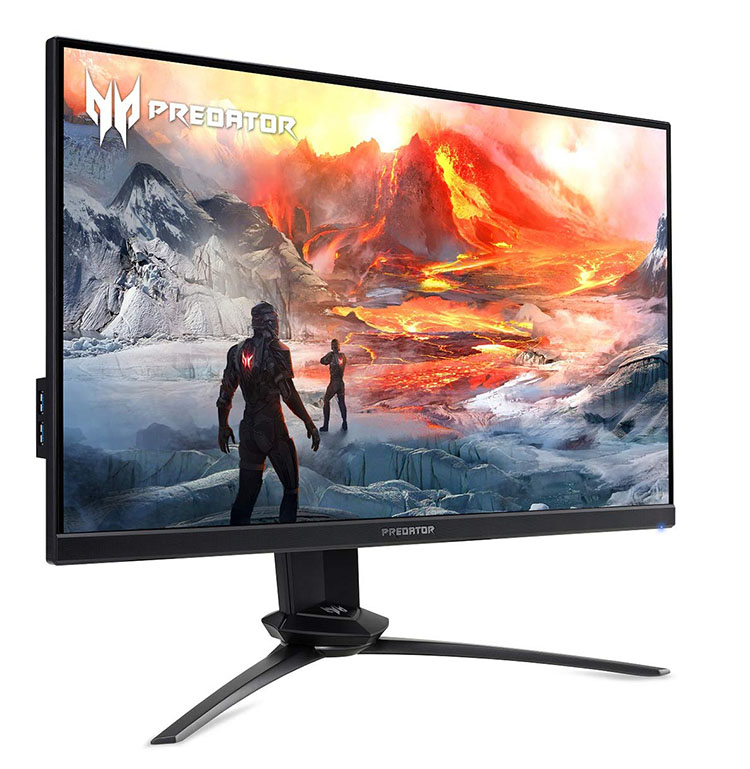Acer Predator XN253Q 240Hz Gaming Monitor Review: The King of Speed
Why you can trust Tom's Hardware
Conclusion
Trying to choose a fast gaming monitor often becomes a percentage game. There are plenty of choices that offer 99% of the ultimate performance, and for most of us, that’s enough. But some want that last 1%, and unfortunately, that means more than a small increase in price.
Casual gamers will be perfectly satisfied with a 144 Hz screen. When playing at 1920x1080, 144 fps is easy to achieve without spending a lot on a graphics card.
But it is undeniable that 240 Hz looks better than 144 Hz. It's not a whole lot better, but the difference is visible.The Acer Predator XN253Q Xbmiprzx delivers that last 1% competitive gamers seek. Running at 240 Hz, there’s nothing faster in our test database. It matches response time and input lag scores with our respective reigning champs, the Aorus KD25F and Alienware AW2518H. Control inputs are seemingly anticipated, and framerates are high enough that motion blur is a non-factor.
If pixel density is more important to you, the XN253Q FHD screen might not be the right choice. But that’s a design choice made for producing the fastest possible performance. When you’re playing at the highest levels of competitive gaming, fast response and high framerates count for more than base resolution. In either case, this Predator delivers good color accuracy and detail rendering once set up properly. However, out-of-box color has room for improvement (see our recommended settings).
Of course, there are monitors out there with better-looking pictures, but to even come close to the XN253Q’s level of gaming performance, you’ll need to spend a lot more money. This Acer isn’t cheap but super-premium 4K gaming monitors at 144 Hz cost two to three times more. The Predator XN253Q should be on every competitive gamer’s short list.
Image Credits: Acer, Tom's Hardware
MORE: Best Gaming Monitors
Get Tom's Hardware's best news and in-depth reviews, straight to your inbox.
MORE: How We Test Monitors
MORE: All Monitor Content

Christian Eberle is a Contributing Editor for Tom's Hardware US. He's a veteran reviewer of A/V equipment, specializing in monitors. Christian began his obsession with tech when he built his first PC in 1991, a 286 running DOS 3.0 at a blazing 12MHz. In 2006, he undertook training from the Imaging Science Foundation in video calibration and testing and thus started a passion for precise imaging that persists to this day. He is also a professional musician with a degree from the New England Conservatory as a classical bassoonist which he used to good effect as a performer with the West Point Army Band from 1987 to 2013. He enjoys watching movies and listening to high-end audio in his custom-built home theater and can be seen riding trails near his home on a race-ready ICE VTX recumbent trike. Christian enjoys the endless summer in Florida where he lives with his wife and Chihuahua and plays with orchestras around the state.
-
T0mW I would love if you could possibly revisit the KD25F regarding input lag. There was a firmware update just a week after you reviewed it and that supposedly addresses that. I know that firmware is hardly gonna change everything but the margin is only 4ms after all and I'd love to know which one is actually faster as the pixel response seems to be tied.Reply
